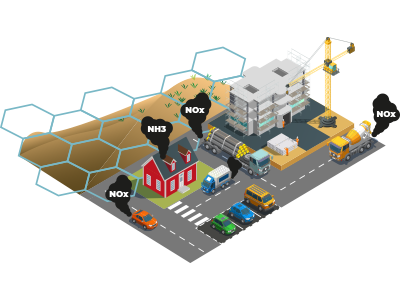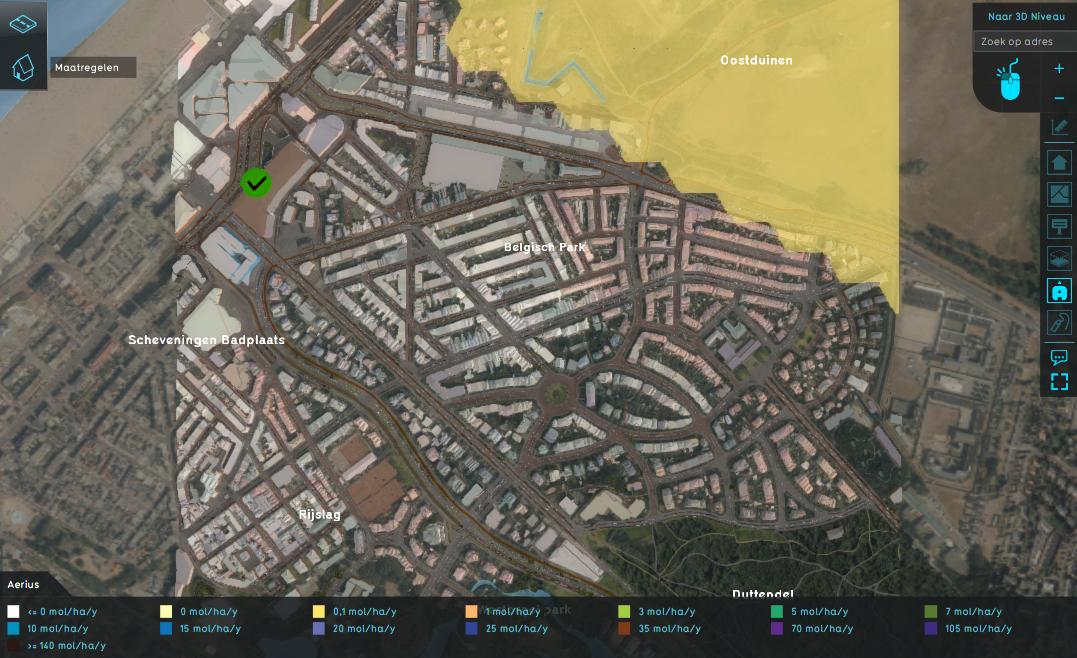Aerius Module overview: Difference between revisions
Jump to navigation
Jump to search
No edit summary |
No edit summary |
||
| Line 41: | Line 41: | ||
</ul> | </ul> | ||
{{Template:Aerius Module buttons}} | {{Template:Aerius Module buttons}} | ||
Revision as of 14:45, 16 July 2020
Overview
The RIVM Aerius calculation tool can calculate the impact of for example traffic, industry and construction on nitrogen deposition on Natura 2000 areas in the Netherlands.

Supported Sectors
The Aerius Calculator tool can estimate emissions for various sectors. Currently supported sectors in the Tygron Platform are:
- Traffic (Wegverkeer):
- Sector 3113: local roads (lokale wegen)
- Sector 3112: rural roads (buiten wegen)
- Sector 3111: highways (snelwegen)
- Mobile machines (Mobiele werktuigen):
- Sector 3220: Construction and industrial machines
- Plan (Plan):
- Sector 9000: used construction materials and constructed type of buildings.
- Work and living (Werk en wonen) emissions:
- 8640: Work
- 8200: Living
- 8210: Recreation
Input
- Traffic intensities for light, medium and heavy traffic. Optionally also bus traffic, as well as the congestion percentages.
- Traffic sector the road belongs to.
- Fuel usage of construction machines, specified per Machine category.
- Amounts per plan category: amount of constructed houses and appartments, amount of constructed office and shops surface, etc. Defined per Plan type.
- NOX and NH3 emissions for the work, living and recreation sectors.
- Calculation year, a value between 2014 and 2030.
Output
- Emissions per building. These are summed up over all input type features for that building: traffic, machinery, amount per plan category and direct emissions. Often a single building has several plan category amounts, some direct emissions and construction machinery fuel usages.
- Grid cells containing the NOX or NH3 pollution based on overlapping Natura 2000 pollution hexagons.
- An array of hexagon values stored in the Aerius Overlay under the NOX and NH3 keys.
Result Types






